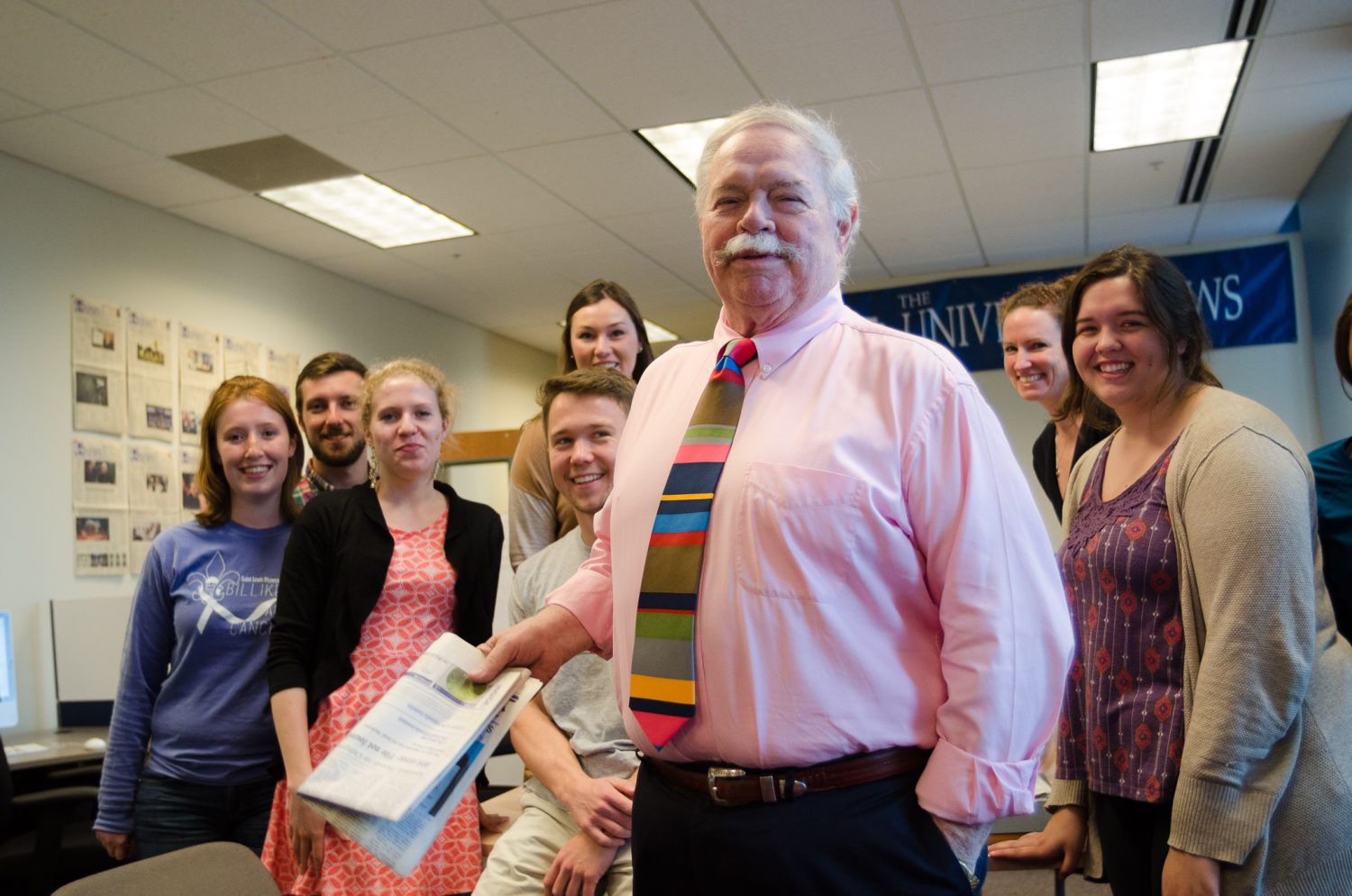Earlier this week, the Cardinal’s organization announced its plans for a new stadium. Sounds good, huh? Sure, if you buy that load that they are selling you. Frankly folks, you are all about to be taken for a ride. I don’t expect anyone to listen to me, but I am a prophet whose wisdom may never be appreciated. This column will let the record show that some have seen through the smoke and discovered the truth.
Stadiums are big projects. In fact, this one is a $370 million project. The city would have to destroy and rebuild a highway 40 entrance ramp (estimated cost $16 million dollars). It would eliminate 9,000 in-demand seats for the 2003 season. What are some reasons to undertake such a huge project? Perhaps your stadium is old, falling down, dangerous or obsolete.
Or maybe you have more fans than your present stadium can hold. Or there is always the possibility that your stadium in over 60 years old, and come on, maybe it might be time for something new and improved. So, let’s see where does Busch stadium fall? Uh, nowhere.
Well then, why would the owners suggest such a huge project that would result in the destruction of a stadium that Charlene Prost, a St. Louis Post-Dispatch writer reported, “still generates acclaim for a distinguished design.”
The fact is that while Busch Stadium may not be the most cutting-edge stadium in the country, it has few flaws. The owners complain that repair costs are getting extreme. They report that repairs and maintenance has increased from $1 million to $1.5 million dollars in the last few years. That’s a lot of money. But let’s talk about increase in profits in the last two years. That totals $28.6 million.
So let’s compare that to the $11 million dollar increase in costs (that includes increases in player salaries). This means that the owners are now making $18 million MORE in profit than they were a few years ago. Not bad. But the owners say that a new complex is needed to stay competitive, even though the Cardinals are one of the top-five teams in revenue from ticket sales.
Let’s start with some trivia questions.
Which stadium do you think the owners would want more, the one with 49,738 seats or the one with 47,900 seats? The one with the most seats right? No, they’re tearing that one down. Would responsible owners just throw away $20 million dollars? No, I would guess not. But these owners want to reduce Busch to rubble after $20 million dollars improvements.
Out of $370 million dollars needed to build the new complex, the Cardinals will be investing $120 million toward the finished product that would increase their checkbook balances. The rest will come from the fans and the city.
But these owners are smart. They dodged a risky situation by avoiding taking the stadium idea to the people. Since they don’t ask for an increase in taxes, they don’t have to ask the people to use their money. But that doesn’t mean that the citizens of the Gateway City don’t pay the estimated $250 million dollar difference.
The team simply said, “We’ll just use the tax money we usually pay to the city of St. Louis.” The team paid $15 million dollars to the city last year. If the stadium is built, then that $15 million will be used to pay for the stadium. That seems to me to be a lot like the team not paying taxes.
Of course that is covered by saying, “The city will be giving us tax-free bonds.” You could call that a 100-percent tax refund. The rest of the money will be made up by increasing taxes on tickets. In baseball math, that equals higher ticket prices.
Oh yeah, ticket prices. Try this on for size.
There will be almost 2,000 fewer seats in the new stadium. From what is left there will be more than 6,000 more “premium” seats. Premium equals expensive, more than $30 dollars a ticket. Six thousand seats for rich people. But the owners tell us everything is OK since they are adding 864 bleachers. Have you ever sat in those bleachers? That is fun baseball until the sixth inning when you can no longer sit upright. Older fans can’t sit in bleachers. Bleachers have no cup holders. What this new seating arrangement means is that there are fewer seats that the average fan can afford.
So, if you want to take a family of four to a game, you can either sit three miles away from the plate on a bench, or you spend this month’s salary to watch one of the season’s 81 games.
But let’s stop talking money. That’s the owner’s language anyway.
Why would they do that to this town? Four years ago, when these owners bought the team from the Busch family, they swore to everyone that they would preserve the stadium. And why was that important? Because it is more than just a stadium. Fans from all over the city, including Andy Benes, have expressed their horror at learning that the Cardinal’s home would be destroyed. There are memories there, decades of memories that go far beyond baseball.
If you think that I am crazy, you can consult Dr. Bob Krizek in our communication department. Krizek presented a paper to the Annual Cooperstown Symposium on Baseball and the American Culture in 1991, about the trauma fans experience when a team decides to destroy a “bridge” to the past like a long-time home field. Krizek personally discussed the loss he felt when Comiskey Park in Chicago was leveled in 1990.
He lost a connection to his father that had died early in 1989.
His piece is full of powerful emotion: Krizek discussed his own feelings as well as those of many people he interviewed at the last game in the old Park. Most of the stories recount the thoughts of people who were left sobbing as they lost memories with slain army buddies, lost fathers and lost childhoods.
Krizek wrote: “As we destroy our physical connections with the past in the name of progress, sanitation, and comfort, as a society we alter the identities of those who have infused those connections with very private, real, and emotionally-anchored meanings. If the words of one event-goer … can be believed-‘Part of me is being torn down also,’-then our culture is eliminating, without much regard for man’s emotional and symbolic investment in them, our associations with the people and things that have come before us.”
St. Louis loves its stadium. The people have no need for a new stadium. Why do this to them? Many could argue that emotional connections to a stadium are overrated, but they still exist. The owners see an opportunity.
As the city surges into the pro-sport limelight, they believe that they can easily persuade politicians to give up millions of dollars that would usually go to fix streets or serve citizens. It should improve inflated profits, but the fans have little to be optimistic about.
The bills will start rolling in, and the people will have no idea why they had to build a new park. They like this one. It is a fine example of the old circular stadiums that are being destroyed in the name of greed. They know it. They understand it. Their childhoods, and fathers and mothers, and brothers reside there. Willie McGee and Whitey Herzog and Ozzie Smith have left their footprints there. It isn’t dangerous; it is beautiful.
The option is for this city to sell out. Sure you can bring an exact replica of Coor’s Field in Denver here, but why would St. Louis want to be Denver? Why can’t it be St. Louis? The Rams got a new arena, but they were also a new team. When this stadium is built, call it “Sellout Field.” Baseball will no longer be the common man’s game, and as far as I am concerned the owners can sit there and enjoy it by themselves. The Cardinal’s organization can then sit back and chuckle how it got a whole city to blindly follow them all the way to the bank.
For everyone else, game over.



